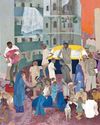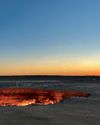
The largest ship the world had ever known, The Titanic sailed from Southampton, England, on her maiden voyage to New York City on Wednesday, 10 April, 1912. She was built with double bottoms, and her hull was divided into 16 watertight compartments. She was thought to be unsinkable and carried more than 2200 people.
Occupying the first-class suites were many well-known men and women—millionaire John Jacob Astor and his young bride; US President William Howard Taft’s close adviser Archibald W. Butt; former congressman and department store Macy’s chief executive Isidor Straus and J. Bruce Ismay, managing director of the White Star Line. In the crowded cabins of steerage class were more than 700 immigrants heading to the land of promise.
Sunday the 14th dawned fair and clear. At nine a.m., a message from the steamer Caronia sputtered into the wireless shack : “Captain, Titanic—westbound steamers report bergs, growlers and field ice in 42 degrees N. from 49 degrees to 51 degrees W. Compliments—Barr.” The message was delivered to Captain E. J. Smith, who wired an acknowledgment.
Just before noon, the rasping spark of early wireless spoke again across the water. It was the Baltic, warning the Titanic of ice on the steamer track. The wireless operator sent the message up to the bridge. Captain Smith read it as he was walking on the promenade deck and then handed it to Bruce Ismay without comment. Ismay read it, stuffed it into his pocket, told two women about the icebergs, and resumed his walk.
This story is from the {{IssueName}} edition of {{MagazineName}}.
Start your 7-day Magzter GOLD free trial to access thousands of curated premium stories, and 9,000+ magazines and newspapers.
Already a subscriber ? Sign In
This story is from the {{IssueName}} edition of {{MagazineName}}.
Start your 7-day Magzter GOLD free trial to access thousands of curated premium stories, and 9,000+ magazines and newspapers.
Already a subscriber? Sign In

BOOKS
Books review

STUDIO - Off Lamington Road by Gieve Patel
Oil on Canvas, 54 x 88 in

NEWS FROM THE WORLD OF MEDICINE
FOODS THAT FIGHT DEMENTIA

TO HELL AND BACK
The Darvaza crater in Turkmenistan is known as the Gates of Hell. I stood on its edge - and lived to tell the tale

THE SNAKE CHARMERS
Invasive Burmese pythons are squeezing the life out of Florida's vast Everglades. An unlikely sisterhood is taking them on

Sisterhood to Last a Lifetime
These college pals teach a master class in how to maintain a friendship for 50-plus years

...TO DIE ON A HOCKEY RINK
ONE MINUTE I WAS PLAYING IN MY BEER LEAGUE, THE NEXT I WAS IN THE HOSPITAL

Just Sit Tight
Broken, battered and trapped in a ravine for days, I desperate driver wonders, \"Will anyone find me?\"

Allow Me to Mansplain...
If there's one thing we know, it's this: We're a nation of know-it-alls

THE BITTER TRUTH ABOUT SUGAR (AND SUGAR SUBSTITUTES!)
It's no secret that we have a serious addiction. Here's how to cut back on the sweet stuff, once and for all.